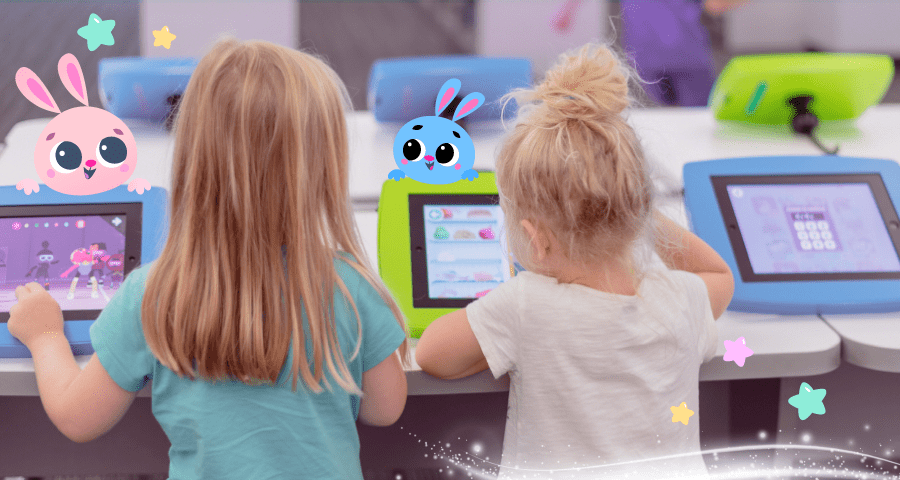Thinking about homeschooling? Maybe your child struggles in a traditional classroom, or you want a more flexible approach to learning. Whatever your reason, homeschooling is a big decision that comes with excitement—and a few challenges.
You might be wondering: Where do I start? What if I mess up? How can I make sure my child is learning enough?
You’re not alone. Many parents have successfully navigated homeschooling, and with the right tips, you can too! Let’s break it all down step by step.
What Is Homeschooling?

Homeschooling is an education method where parents take the lead in teaching their children at home. Instead of following a traditional classroom setting, learning happens through customized lessons, hands-on activities, and real-world experiences.
It’s not a new concept. Before schools existed, children learned from their families and communities. Today, homeschooling is a structured, legal option in many countries, allowing parents to shape their child’s education based on their needs, interests, and pace.
Homeschooling Tips: Top Benefits
Some kids thrive in a traditional school, while others struggle with rigid schedules, crowded classrooms, or one-size-fits-all lessons. Homeschooling offers:
- Move at your child’s pace, whether they need extra time or advanced challenges.
- No early morning rush, and vacations can happen whenever you want.
- More time together means closer relationships.
- Less stress from peer pressure.
Step-by-Step Homeschooling Tips for Parents
Every homeschooling journey is unique, but these 12 tips will help you create a structured, engaging, and stress-free learning experience—though, of course, there are challenges at every step.
Set Clear Goals and Expectations
Before you jump in, take a moment to think: What do I want my child to accomplish?
Challenge: It can be tough to figure out the right goals without knowing how your child learns.
- Break learning into smaller, easy goals.
- Be flexible—sometimes things don’t go as planned!
- Celebrate every little bit of progress along the way.
For example, Sarah wanted her son, Alex, to get better at reading. Instead of just saying, “We’ll work on reading,” she set a clear goal: read 10 beginner books by the end of the semester. This gave them something specific to focus on.
Choose a Curriculum That Works for Your Child
Challenge: With so many options, it can be overwhelming for parents to choose the right approach.
- Traditional curriculum – Follows structured textbooks and lesson plans.
- Online learning – Uses educational apps, videos, and digital courses.
- Project-based learning – Focuses on real-world projects and exploration.
- Unschooling – Lets kids guide their own learning based on interests.
Not all kids learn the same way. You don’t have to commit to just one—many parents blend multiple approaches!
Example: Lisa’s daughter, Mia, hated worksheets but loved storytelling. Instead of using a standard phonics book, Lisa switched to reading-based learning with audiobooks, role-playing stories, and letter tracing in sand. Mia learned faster because the lessons matched her learning style.
Create a Daily (But Flexible) Routine
Challenge: Parents often struggle to maintain balance, unsure of when to be strict or flexible.
- Start with core subjects in the morning when kids are most alert.
- Incorporate creative and physical activities in the afternoon.
- Use short, focused learning sessions (20–30 minutes per subject).
- Take breaks! Learning happens in relaxed moments too.
A predictable schedule helps children stay focused.
Example: Mark found that his son, Jake, lost focus after an hour. So, instead of a long school day, Mark scheduled 30-minute study blocks with short breaks in between. Jake stayed engaged, and learning felt fun instead of overwhelming.
Make Learning Hands-On and Interactive
Challenge: Finding resources and time for hands-on learning can be tough, especially with multiple kids.
- Science? Do kitchen experiments, grow plants, or visit museums.
- Reading? Act out stories, use audiobooks, or create a reading tent.
- Math? Use real-life examples like cooking, budgeting, or shopping.
- Children learn best through doing, not just listening.
Example: Emma’s daughter, Sophie, struggled with fractions. Instead of worksheets, Emma used pizza slices to explain halves, thirds, and quarters. Sophie caught on quickly because she could see and touch the fractions.
Encourage Independent Learning
Challenge: Parents often feel pressured to be in control of every learning moment.
- Let them choose some of their learning topics.
- Encourage self-led projects and research.
- Teach time management and goal setting.
Example: Kevin noticed his son, Leo, loved space. Instead of assigning a generic science lesson, he let Leo research planets and create a model of the solar system. Leo was excited, and he retained the information better.
Join a Homeschooling Community
Challenge: Parents can feel isolated without the support of a network.
- Join local homeschool groups or co-ops.
- Sign up for community classes (music, sports, art).
- Plan regular field trips and playdates.
- Homeschooling doesn’t mean isolation!
Example: Rachel’s biggest worry was that her son, Ethan, wouldn’t make friends. She joined a local homeschool co-op where kids met weekly for group lessons, field trips, and playdates. Ethan made new friends, and Rachel found support from other homeschooling parents.
Use Educational Apps to Make Learning Fun
Challenge: Parents sometimes worry that screen time may take away from traditional learning.
Bini Games apps can be a valuable tool in your homeschooling journey. We offer a wide variety of learning activities that can help your child develop essential skills.
Bini Games apps help turn those busy moments—like long car rides—into fun, productive learning time. Whether your child is practicing writing letters, playing with numbers, or discovering something new, these free apps make learning exciting.
For example, David’s daughter, Lily, was having trouble recognizing letters. He downloaded an interactive phonics app that allowed her to write letters, trace them, and play matching games. Soon, Lily was recognizing letters all around her!
Adapt to Your Child’s Learning Style
Challenge: Parents may need time and experimentation to discover what works best.
- Auditory learners – Learn best through listening (audiobooks, discussions).
- Visual learners – Prefer pictures, charts, and videos.
- Kinesthetic learners – Need movement and hands-on activities.
Every child learns differently.
Example: Olivia’s son, Noah, hated sitting still during lessons. She realized he was a kinesthetic learner, so she added movement-based learning—practicing spelling words with jumping jacks and using LEGO for math problems. Noah started to enjoy learning!
Be Patient and Allow for Bad Days
Challenge: Parents may feel discouraged or frustrated on challenging days.
- Feeling stuck? Switch to a fun learning activity like baking or a nature walk.
- Child resisting? Let them take ownership by choosing the next lesson.
- You’re overwhelmed? Step back and remember why you chose homeschooling.
Example: One morning, Lisa’s kids refused to do schoolwork. Instead of forcing it, she took a break and baked cookies together—practicing measuring, counting, and patience along the way. The next day, they were refreshed and ready to learn again.
Balance Academics with Life Skills
Challenge: Parents can feel torn between managing academics and real-world skills.
- Cooking teaches measurement and responsibility.
- Budgeting helps with math and financial literacy.
- DIY projects build problem-solving skills.
These lessons are just as important as traditional academics.
Example: Tom taught his kids budgeting by giving them a weekly allowance. They learned to save for things they wanted, making math and money management feel real.
Track Progress Without Stress
Challenge: Parents often feel the need to track every detail but can struggle with balance.
- Keep a portfolio with their best work.
- Use a simple checklist for skills they’ve mastered.
- Take progress photos of hands-on projects.
- Keeping track of progress helps adjust lessons.
Example: Instead of tests, Mia’s mom kept a learning journal, where Mia wrote about what she learned each week. This simple habit helped Mia see her progress and build confidence.
Make Learning a Lifelong Adventure
Challenge: It’s easy to fall into a routine, but parents need to foster creativity and exploration.
- Read together as a family.
- Explore the world through travel and nature—outside the usual learning environment.
- Encourage hobbies like coding, art, or music—each offering something different and unique.
The best learning happens when kids’ curiosity leads the way.
Example: Instead of just reading about animals, Sarah took her kids to a farm. They fed the animals, asked questions, and wrote about their experience. It became a learning adventure they never forgot!
At Home Learning Tips for Parents: Is Homeschooling Right for You?

Homeschooling works for many families, but it’s not the best option for everyone. It might not be the right fit if:
- You struggle with time management.
- Your child thrives on social interaction in a classroom.
- You don’t have a support network.
- You feel overwhelmed by being the main teacher.
If any of these apply, you might consider a hybrid approach, like online schooling or part-time homeschooling, to complete the educational experience with support.
You Can Do This!
Homeschooling may seem overwhelming at first, but remember—you don’t have to be a perfect teacher. The goal is to create a learning environment where your child can grow, explore, and succeed at their own pace.
Every homeschooling journey is unique, and you’ll find what works best for your family. Take it one day at a time, celebrate small victories, and most importantly—enjoy the learning process together!
So, are you ready to give homeschooling a try? With the right mindset and tools, you can create an amazing learning experience for your child!










